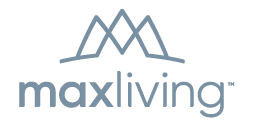- HOME
- CATALOG
- ESTIMATE
- MY ACCOUNT
- SHOPPING CART
- FAQ
- File Specifications
|
Groups of related products.
A product is a printed piece with predefined dimensions. Use the products shown whenever possible or specify the dimensions manually if the product is not shown in the list.
Bleed Size refers to the full size (in inches) that the printed piece will occupy on paper (the press sheet) as it's printed. The estimate is based primarily on this size.
This size is also the expected size of the artwork. It is recommended that your artwork be this size when providing artwork for your order.
Cut Size refers to the size (in inches) that the printed piece will be cut to, prior to any folding or scoring that may apply.
Finish size refers to the size of the product (in inches) after any finishing work has been done such as folding. If there is no finishing work or if the finishing does not alter the size, keep this the same as the cut size.
When the print piece is a multi-page collated document, such as a PDF, then specify the number of printed sheets in each piece. For example, an eight page letter-sized document normally prints as four double-sided sheets. This is only for collated sets printed from a single print-ready PDF file.
Versions allows quoting for multiple versions of an item in a single space. It also allows you to set up a single Item in an order and have it auto-split into the number of Versions when a multi-page pdf file with artwork for all the Versions is linked.
Padding refers to a stack of sheets painted with glue on one side to form memo pads, routing slips, scratch pads, etc.
This specifies the number of inks on side one of the piece.
This specifies the number of inks on side two of the piece.
Substrates (paper) come in assorted textures, colors and price. Substrates may be selected by PaperID or by Name.
This is a list of the press devices available. You can use this to compare the cost of producing items on different presses, which is especially helpful if there is a mixture of digital and traditional presses.
Imposition is an advanced topic that refers to the layout or configuration of your print piece on the press sheet. The number of pieces that fit on a single press sheet is referred to as the number up and impacts the estimated number of sheets needed to fulfill your order.
Estimates are based on the number of press sheets required to fulfill your order. The imposition layout may be viewed by clicking the show checkbox. Dutch Layouts may be disabled by checking the without dutch layouts checkbox.
Dutch Layouts are an advanced topic that refers to the mixed rotation of a print piece within a single layout to maximize the number up. Although this can minimize press costs it means that the print pieces will have varying grain direction and impacts scoring and folding quality.
Sheetwise
With sheetwise printing, for a double-sided document one side is printed on the parent sheet then the printing plates are changed and the paper is turned over (after the ink dries) to print on the backside of the sheet of paper.
Sheetwise printing can also refer to simply printing only on one side of the sheet of paper.
Work-n-Turn
Work-n-Turn refers to how the sheet of paper is flipped over side-to-side to be sent back through the press. The top edge of the paper (the gripper edge) that went through on the first pass is the same edge to go in first on the second pass. The side edges are flipped. Using work-n-turn, you don't need a second set of printing plates because the same set is used for both sides
Cut-n-Stack
Cut-n-stack work mode is to be used for Single-sided (simplex) or double sided (duplex), multi-up imposition for jobs that will be bound with wire, comb binders and so on, and therefore will be trimmed to single pages. Once printed and stacked, each set of surfaces will be cut, and stacked on top of the other to give a full set of pages in order.
Proofs represent a sample of the piece to be printed. PDF-Only refers to digital proofs which is a PDF document of your artwork as processed by our system and represents how it will be printed and cut by our production staff. Printed Proof refers to an actual printed copy of the print piece on a standard paper. Proofs must usually be approved prior to producing the order.
Up to three quantities may be calculated and displayed for easier price comparison.
